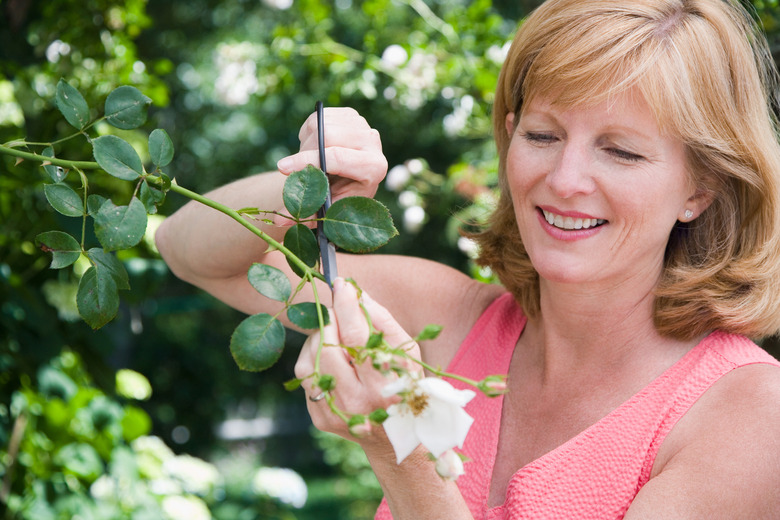How To Prune Asters, Salvia And Other Flowering Plants
Things Needed
- Sharp, clean pruning shears, of a size and weight comfortable to hold in your hand
- Receptacle for trimmings
- Gloves (optional, but highly recommended for pruning any plant with thorns)
- Bleach
- Container
Knowing when and how to prune flowering plants is one of the fundamental skills beginner gardeners need to learn. Once you master pruning, you're well on your way to having healthy, attractive perennials that come back year after year, maintaining their shape and getting bigger without crowding out other plants. Positive pruning practices are essential to plant health, helping to prevent diseases and ward off pests. Pruning annuals is almost never necessary, since they only last for one growing season, but perennials, such as asters and salvia, need to be pruned at least once per growing season.
Step 1
Determine when to prune. Plants do best when pruned early in the growing season or once they have begun to go dormant at the end of the season. Asters and salvia, since they are autumn-blooming plants, should be pruned early in the spring to ensure sturdy growth, then pruned again at the very end of the season–after the first hard frost, or even just before the first heavy snowfall, is best.
- Knowing when and how to prune flowering plants is one of the fundamental skills beginner gardeners need to learn.
- Pruning annuals is almost never necessary, since they only last for one growing season, but perennials, such as asters and salvia, need to be pruned at least once per growing season.
Step 2
Examine the plant, and identify the goals for pruning. At the very least, you will need to eliminate any dead areas of the flowering plant and trim terminal buds to encourage healthy growth. You may also wish to prune the plant into a specific desired shape, although too much shaping is usually not appropriate for flowering plants.
Step 3
Trim out any dead areas of the plant. Cut any dead stems down to the nearest area where you still see signs of healthy growth. Cut out any stems that show marked signs of disease. Clean your pruning shears with a light bleach and water solution, mixed in a container, after they have contact with any diseased plant areas to prevent spreading disease.
- Examine the plant, and identify the goals for pruning.
- At the very least, you will need to eliminate any dead areas of the flowering plant and trim terminal buds to encourage healthy growth.
Step 4
Trim the ends of each stem in the spring, before the flowering season begins, to encourage flowering plants to grow shrubby, rather than tall and spindly. These buds prevent the growth of side buds, so when they are removed, the side buds will start to grow, ensuring a more robust shrubby shape for flowering plants. This can be done with asters and salvia through June.
Step 5
Trim plants down to the ground, leaving only 3-5 inches of stem, in late fall or early winter. This will prevent winter storms from damaging the plants and make it easier for spring growth to emerge. Asters especially need to be cut back, since otherwise their tall stems can form a thick tangle over the winter.
